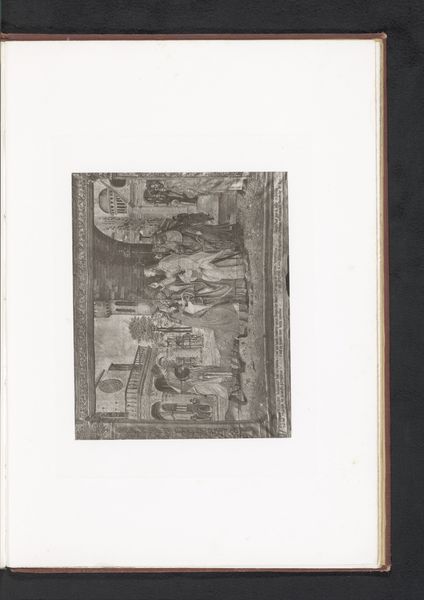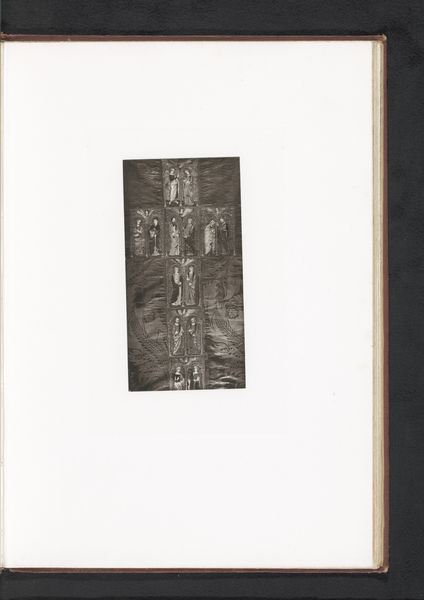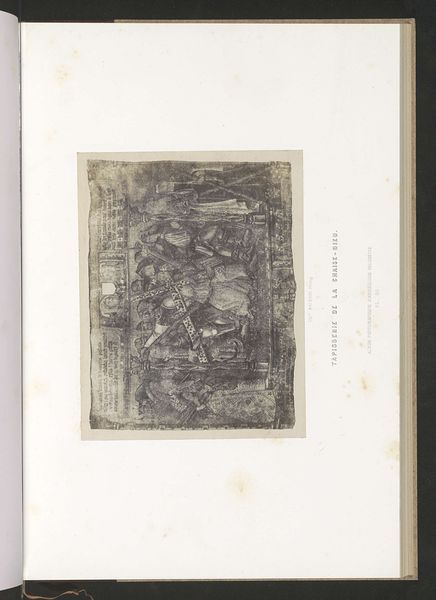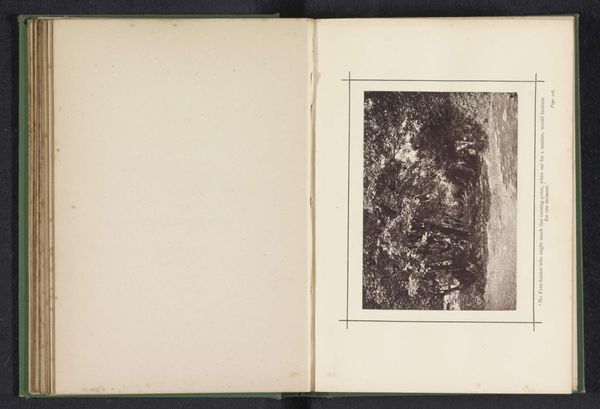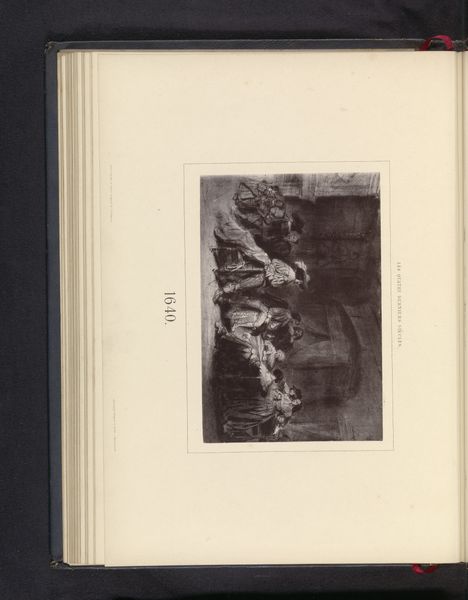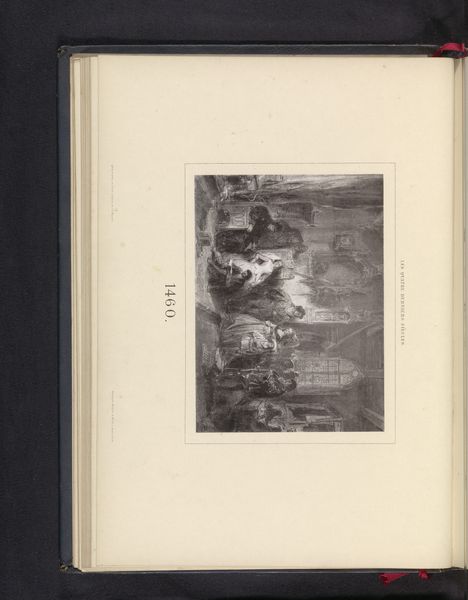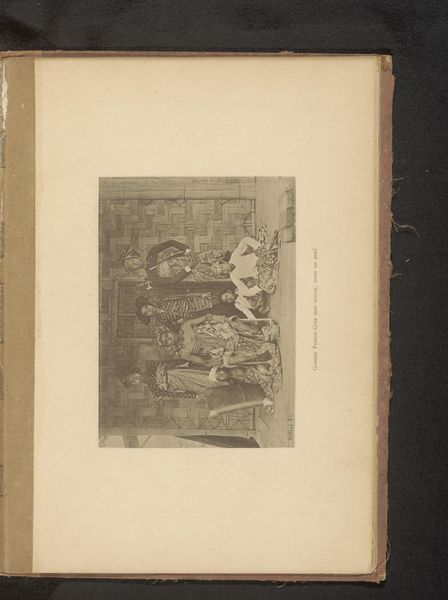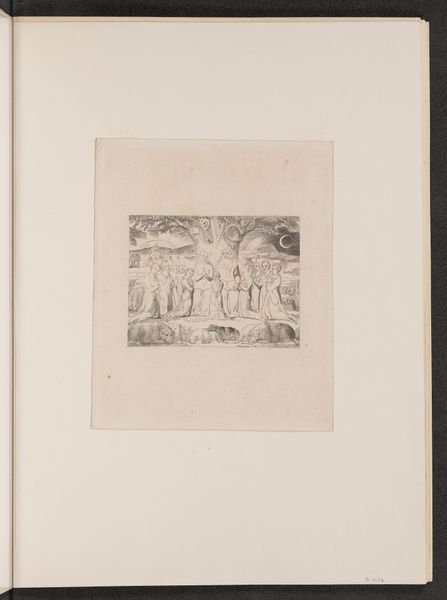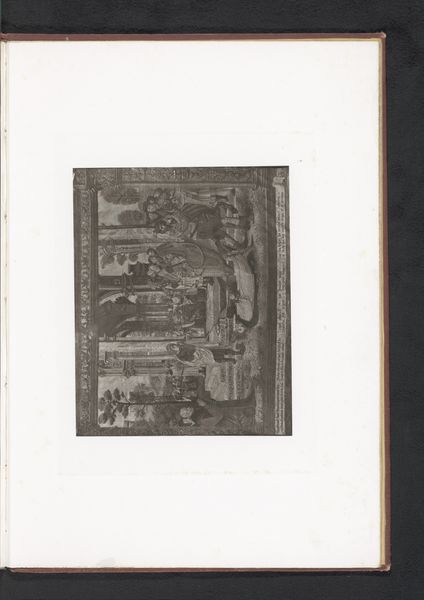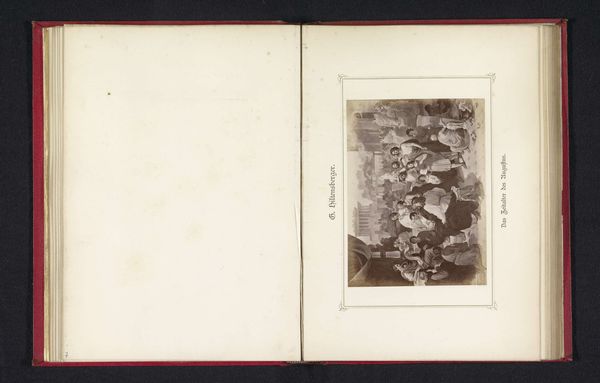
Wandtapijt met een voorstelling uit het leven van de heilige Saturninus van Toulouse, opgesteld tijdens de Exposition Rétrospective van 1873 in Tours, Frankrijk 1873
0:00
0:00
print, etching, engraving
#
medieval
# print
#
etching
#
history-painting
#
academic-art
#
engraving
Dimensions: height 177 mm, width 219 mm
Copyright: Rijks Museum: Open Domain
This print by Gabriel Blaise captures a tapestry depicting the life of Saint Saturninus, displayed in Tours, France, in 1873. The printmaking process itself—likely an etching or engraving—mirrors the tapestry’s original labor-intensive craft. Think of the countless hours spent at the loom, interlacing threads to build up the image! Then consider the skilled hand of the printmaker, painstakingly transferring that design onto a metal plate. The tapestry, as depicted here, is more than just decoration; it's a form of storytelling, a visual sermon woven with threads. The choice of subject matter, a saint's life, speaks to the cultural importance of religious narratives during this period. Tapestries like these were not merely art objects, but tools for instruction and devotion, accessible to those who couldn't read. Ultimately, appreciating this print involves recognizing the many layers of making – the weaver's skill, the printmaker's craft, and the social context that gave meaning to both.
Comments
No comments
Be the first to comment and join the conversation on the ultimate creative platform.

